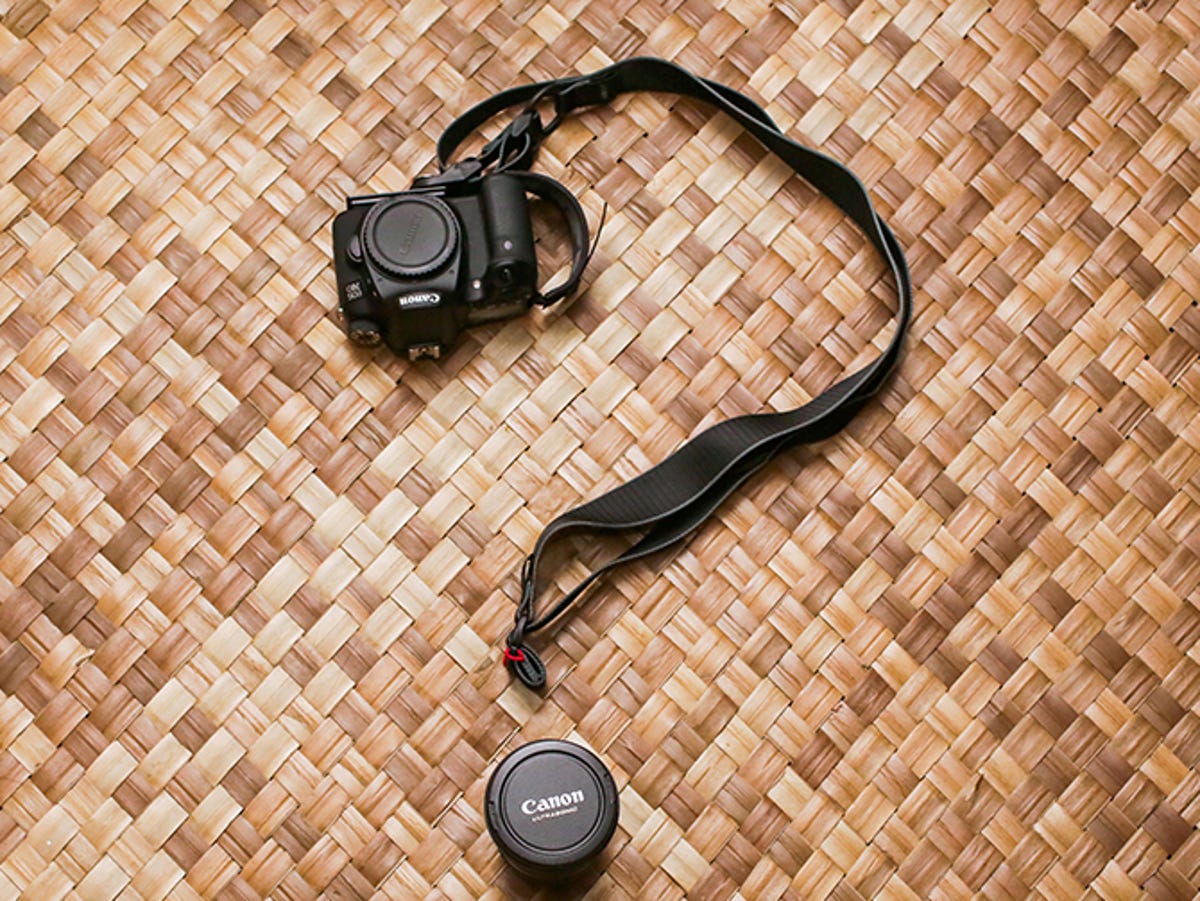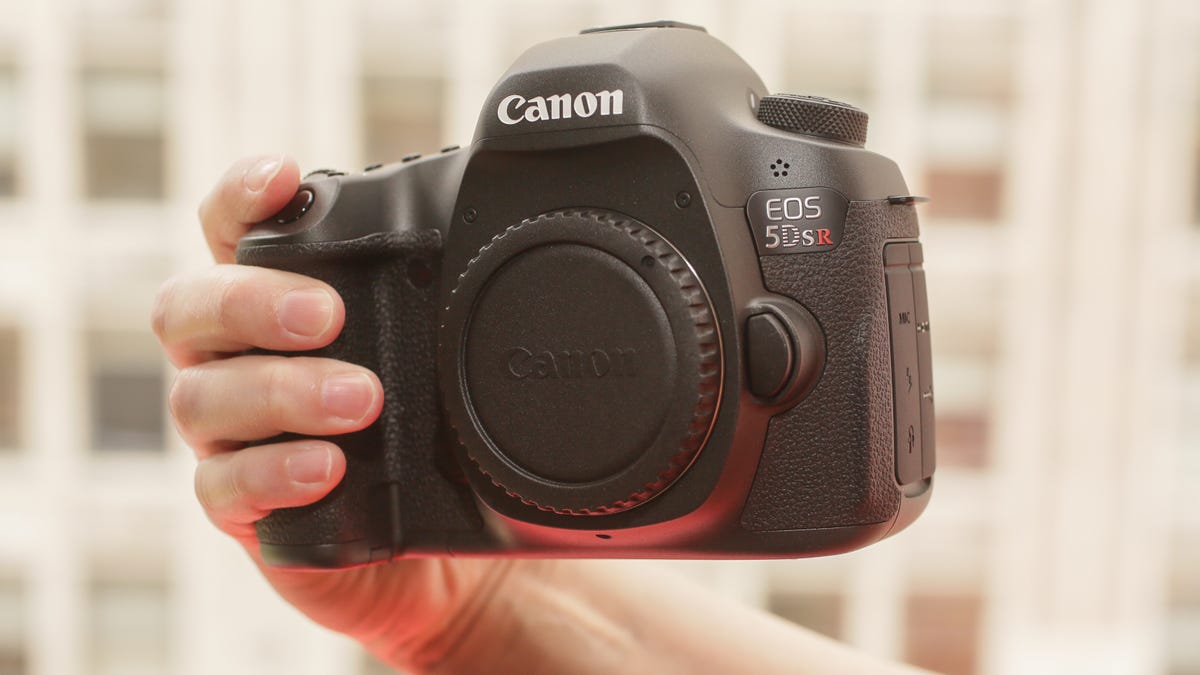
Even once you've narrowed a choice down to a specific manufacturer, the decision as to which model to buy can still be complicated and overwhelming. In fact, I'd say it's probably harder to pick the right camera from a particular lineup than it is to decide which manufacturer's wares you like best. Here's my take on Canon's current dSLR offerings and when and whether I think it's worth the extra bucks (or quids) to buy higher up the line.
On a general note, if your budget is tight, and unless there's a specific feature or performance level you need from a particular model, it's usually a good idea to save money on the body and spend it on a better lens.
In addition, the prices given here, especially for older models, tend to be in the middle of a wide range. I use commonly available pricing in this, not manufacturer prices.
Still to come: Reviews of the EOS Rebel T6s/760D, EOS 5D Mark IV, EOS 5DS and EOS 5DS R and EOS-1D X Mark II.
Editors' note: This story was originally published in a different form in May 2012 and is updated regularly.
Rebel T5/1200D: Cheapest
Now that the T3 is really difficult to find -- and even if you do its now-higher price makes it a terrible deal -- you can still get it in the form of the T5/1200D, which is also repackaged older technology. But if you need the least expensive model possible, the T5, with a kit price of $400, £260 or AU$500 makes sense.
The next cheapest is its replacement, the T6/1300D, but if you're planning to spend a little more than the T5's price, you might as well get the older T5i/700D, the more feature-filled camera on which the T6 is based.
EOS Rebel T6/1300D: Entry-level Limbo
The T6/1300D ($500, £310, AU$550) isn't a bad camera, but it doesn't stand out among its Canon competitors, and won't until the T5/1200D (which is cheaper at $400, £260 and AU$500) or T5i/700D (which has the same imaging and autofocus system but better features at $600, £400, AU$800, not a lot more than the T6) finally disappear from the market. It's likely that future Canon promotions will drop the price to make it more attractive, however.
EOS Rebel SL1/100D: For the size-conscious
This model is essentially for people looking for something a mite smaller than the standard dSLR, and really only stands out as the best Canon dSLR for people with small hands. At $500 (£320, AU$800) for the kit, it's slightly less than you'd pay for the T5i/700D kit ($600, £400, AU$800). But it has fewer features than that model -- you lose the articulated display, and it has slower continuous-shooting performance and a poorer battery.
EOS Rebel T5i/700D: The cheapest model worth buying
For most hobbyists, vacation shooters and non-pro business users in the US and Australia: the Rebel T5i/700D ($600, £400, AU$800). It has better features than the T6/1300D -- including excellent video capture, and an articulated LCD -- despite being older, and the T6 is essentially the T5i on the inside. The only sacrifice you make is the T5i lacks Wi-Fi.
EOs Rebel T6i/750D (and T6s/760D): Best general purpose value
The T6i/750D delivers solid photo and video quality with performance that should be able to handle most of what you'll throw at it in everyday use ($700, £670, AU$1,000). The T6s/760 is roughly the same camera, but with a different body design and a couple of extra features; it looks like whichever might be the best deal may vary from day to day given how close their prices are. You can find it as a kit with the 18-135mm STM lens for $900 (£700, AU$1,350).
However, just to complicate things, the slowly disappearing 7D's prices come extremely close to the T6s' in the US and UK ($900, £715) -- it doesn't seem to be available anymore in Australia -- and it has a better build quality and probably better performance, so consider that instead of the T6s. The old 60D ($840, £880) is also cheaper for the body and still widely available in the US and UK, but at this point I'm not sure whether it's comparable or better than the other two.
EOS 60D: Better build than the Rebels
For better build quality and viewfinder than the any of the Rebels (the triple- and quadruple-D models outside the US), the 60D still exists. However its prices are starting to rise on the formerly attractive 18-135mm kit which is disappearing from view; the body is still somewhat available in the US and widely found in the UK ($840, £880). While it lacks some of the refinements of the Rebel models, the EOS bodies really do feel sturdier than the Rebels, though not as much over the T6s/760D. The 70D seems to be cheaper in the UK at £721, but the 60D is still less expensive in the US. I don't think it's an option in Australia, however.
EOS 70D: For prosumer action- and video-shooters on a budget
If you need fast performance and advanced autofocus, the 70D delivers for about $900 (£721, AU$1,180). It's better all around than the older 60D and offers some advantages over the older, less expensive 7D, including better overall performance, an articulated touchscreen and SD-card support. However, the body-only version is harder to find in the UK, and for the more commonly available 18-135mm kit at $1,200 (£935, AU$1,600) it doesn't feel quite so budget.
EOS 80D: The best Canon prosumer action shooter
Faster than the cheaper 70D $900 (£721, AU$1,180) and in most ways even faster than the more expensive 7D Mark II, the 80D ($1,200, £895, AU$1,545) provides the best performance for a Canon under $1,500 in the US; in the UK and Australia, the 7DM2 is cheaper. Though the 7DM2 still outpaces it for continuous shooting, the 80D has the best, most responsive Live View -- via the LCD rather than the optical viewfinder -- speed. It also has better JPEG quality than the 70D and other improvements.
EOS 6D: Full-frame on the cheap-ish
If you want the least expensive full-frame model, just to gain the extra control over depth-of-field the full-frame supplies, the decision is much easier than it used to be since the body-only version of the older 5D Mark II is practically gone. Currently $1,400 (£1,060, AU$1,820), the 6D's a fine camera, but has a more consumer-oriented design and feature set than the 5D Mark III. It has an inferior viewfinder, less-durable shutter and single SD card slot. In exchange, however, you gain Wi-Fi and GPS, somewhat better high ISO image quality, and a lighter body in the 6D. It's also disappointingly slow compared with the cheaper 80D ($1,200, £895, AU$1,545) and slightly more expensive 7DM2 ($1,500, £715, AU$,2000) -- though both are much cheaper in the UK -- and the 6D is overdue for an update.
EOS 7D Mark II: The continuous-shooting choice
Canon's fastest APS-C model has an updated autofocus system that makes it the best choice for nonprofessional sports shooters. At $1,500, £780 or AU$2,200 for the body, it's frustrating that you have to choose between the now-cheaper in the US and Australia full-frame 6D ($1,400, £1,040 or AU$2000) and the 7DM2. That said, the 6D is over two years old, so you might want to wait to see if Canon replaces it with something faster soon.
It's also annoying that you have to buy a cheaper camera if you want a flip-out display or Wi-Fi.
EOS 5D Mark III: The best general-purpose full-frame option
For the best value professional full-frame camera in Canon's line, the 5D Mark III at $2,600 (£1942, AU$3,500) is probably your pick. It adds a significant boost to its autofocus and continuous-shooting performance over the Mark II and the 6D -- enough that some people who otherwise might have opted for the 1D X needn't. Plus there are sufficient features and changes in the design that it feels like a better model than its predecessor for shooting both stills and video. Firmware updates over the years have added important capabilities too, such as clean HDMI-out, and it remains the least-expensive full-frame in Canon's line that's got a feature set for pro videographers.
While its successor, the Mark IV, ups the resolution and adds 4K video and Wi-Fi, it's also a lot more expensive. You might want to think about spending less on a used 5DM3 for now -- or just postponing the purchase for a while -- and wait for the 5DM4 price to drop from $3,500 (£2,630, AU$5,200).
Canon EOS 5D Mark IV: Probably the best general-purpose pro model
Canon's updates to its full-frame dSLR for working photographers who don't shoot fast action switches to the company's Dual-Pixel sensor, which is optimized for video focusing. We won't know how it affects the camera's dynamic range until we get to test it, though, so don't sell your 5D Mark III quite yet. While it adds a lot of useful features, including Wi-Fi, GPS and 4K video, it may not be worth the $3,500 (£2,630, AU$5,200) compared to the older model for everyone.

EOS 5DS and 5DS R: When all that matters is resolution
The Canon 5DS and 5DS R boast a full-frame 50.6-megapixel CMOS sensor. With the 5D Mark IV leapfrogging them in some respects but at a similar price, you basically have to choose between fast and video-capable at 30 megapixels versus high resolution. The only difference between the two versions is the "R" model internally cancels the effect of the optical low-pass filter on the sensor, whose job it is to eliminate artifacts like moire, but at the expense of sharpness.
These cameras are a lot more expensive than the Mark III, and comparably priced to the Mark IV: $3,400, £2,350, AU$4,600 for the 5DS and $3,600, £2,800, AU$5,200 for the 5DS R. These are wildcards -- the high resolution means very little if the overall image quality isn't as good as or better than the 5DM3, though they do incorporate a more advanced autofocus system.
EOS-1D X
Though I haven't tested it -- and it's been replaced by the 1D X Mark II, so I probably won't -- the 1D X, costing $4,600, £4,670 and AU$6,500, is a cheap alternative to its successor. So it's still a great bet for fast, full-frame continuous-shooting for a Canon, with a rated speed of 12fps and support for dual UDMA 7 CompactFlash cards. The Mark II costs $6,000 (£5,200, AU$9,000), quite a bit more, but has been updated over the 1D X in almost every way.
EOS-1D X Mark II
The recently released flagship model for sports photographers, the 1D X Mark II ($6,000, £5,200, AU$9,000), has tons of updates over the 2013-era 1D X ($4,600, £4,670 and AU$6,500); almost everything is different save the fundamental body design. So if you need 4K video, better frame rates, better live view shooting, or a higher-resolution sensor, it's worth considering.


